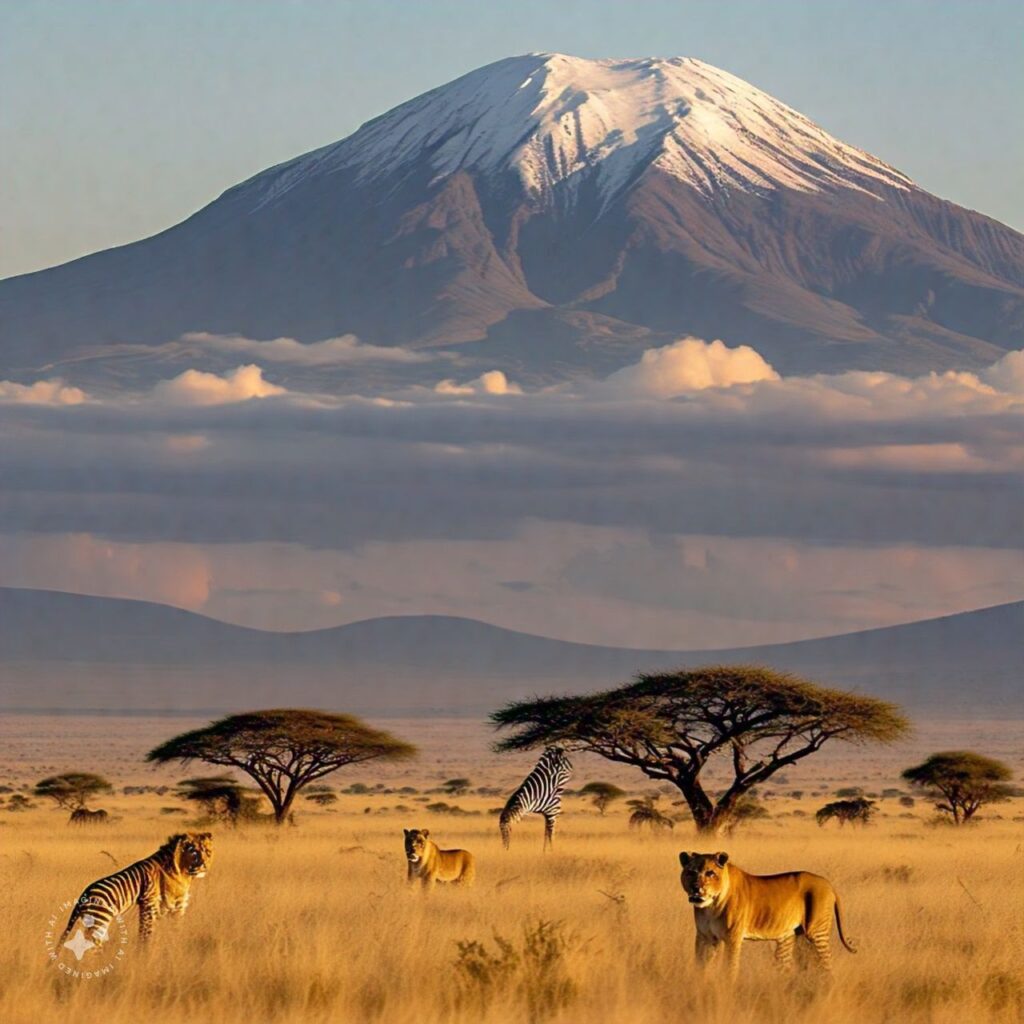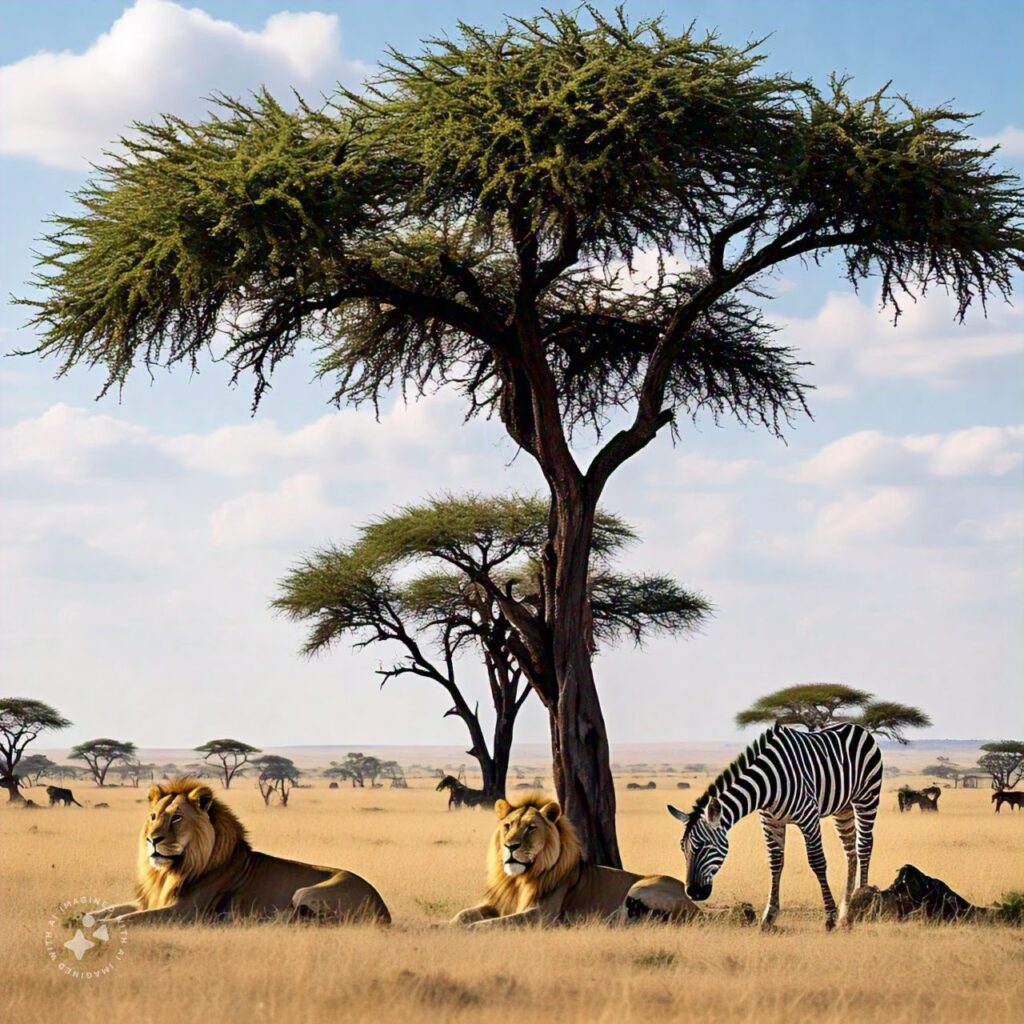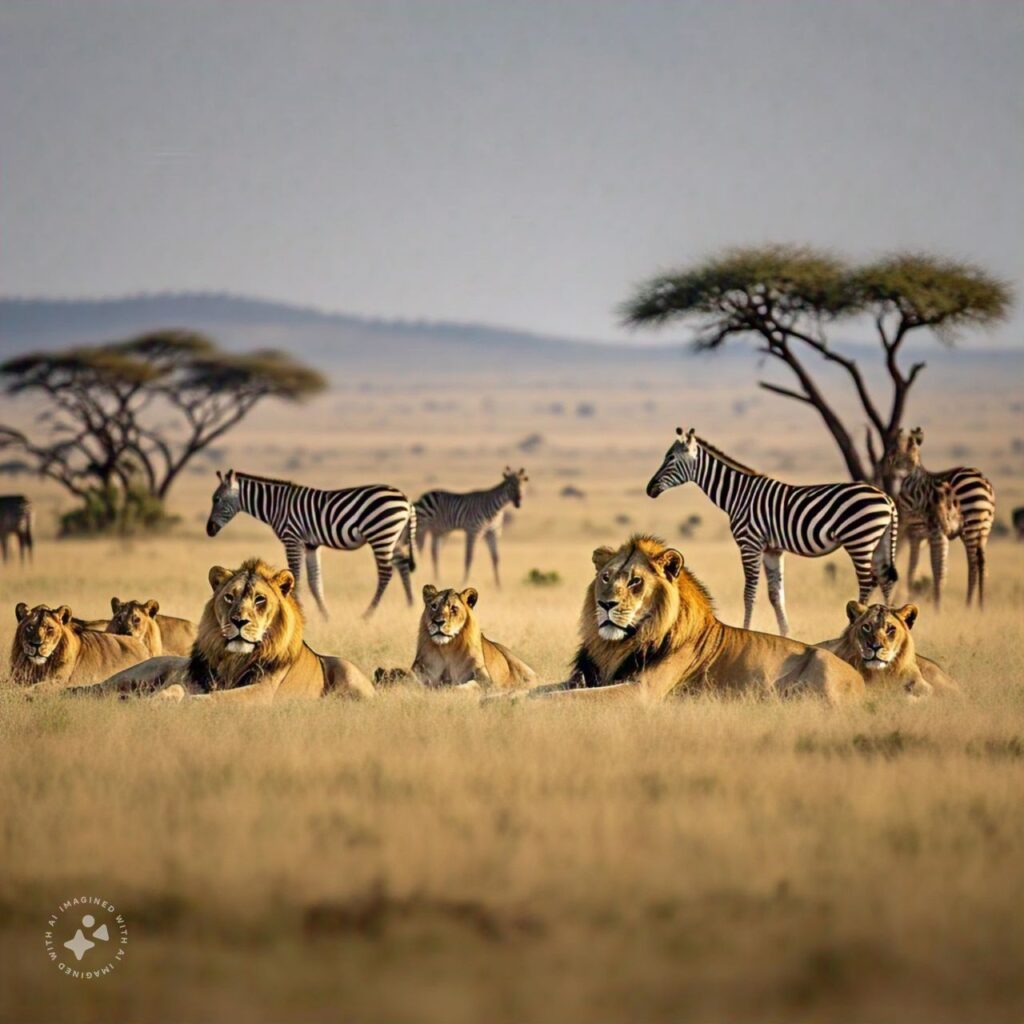The Serengeti, one of the most iconic wildlife destinations in the world, is a vast expanse of savanna, grasslands, and woodlands located in northern Tanzania. Known for its breathtaking landscapes and unparalleled biodiversity, the Serengeti National Park is often considered the heart of Africa’s natural heritage. Covering approximately 15,000 square kilometers (5,800 square miles), it is a UNESCO World Heritage Site and remains a symbol of Africa’s pristine wilderness. In this article, we explore the Serengeti’s rich ecology, its most famous wildlife, and the significance it holds in conservation and tourism.

A Landscape of Wonders
The Serengeti’s name, derived from the Maasai word “serengit,” means “endless plains.” True to its name, the Serengeti stretches across the horizon in an almost unbroken panorama of golden grasses and scattered acacia trees. Its varied landscapes include grassy plains, woodlands, riverine forests, and rocky outcrops known as “kopjes,” which offer some of the most picturesque views of the park. These kopjes, formed from ancient volcanic rock, are not only stunning features of the Serengeti but also serve as lookout points for predators and refuges for various species, including baboons and cheetahs.
The Serengeti’s climate is characterized by two distinct seasons: a dry season from May to October and a wet season from November to April. The wet season brings lush vegetation and the annual migration of thousands of wildebeest, zebras, and gazelles. During the dry months, large herds of animals gather around water sources, making them easier to spot.
The Great Migration: A Natural Spectacle
One of the most remarkable phenomena in the Serengeti—and perhaps the world—is the Great Migration. Every year, more than 1.5 million wildebeest, accompanied by hundreds of thousands of zebras and gazelles, undertake an epic journey across the plains in search of food and water. This migration is driven by the seasonal rains that trigger an abundance of fresh grass. The herds travel from the southern Serengeti to the Masai Mara in Kenya and back, crossing rivers and dodging predators along the way.
The river crossings, particularly at the Mara River, are some of the most dramatic moments in the migration. Here, large herds must wade through the crocodile-infested waters, with predators such as lions and hyenas lying in wait on the banks. These crossings are a heart-stopping spectacle for wildlife enthusiasts and photographers, as they witness the raw, unfiltered drama of survival in the wild.

The migration not only provides a feast for predators but also sustains many species that depend on it, from scavengers like vultures and jackals to apex predators like lions, cheetahs, and leopards. It is a vital cycle that sustains the entire ecosystem of the Serengeti.
Wildlife: The Kings of the Serengeti
The Serengeti is home to some of the most charismatic and awe-inspiring wildlife on the planet. The park’s diversity makes it one of the best places in the world to experience African wildlife in its natural habitat.
- The Big Five: The Serengeti is home to Africa’s famous “Big Five”—lion, elephant, buffalo, leopard, and rhinoceros. Of these, lions are particularly prominent. The Serengeti is often regarded as the best place to see lions in the wild. Their mane-filled prides roam the grasslands, and their roars echo across the plains at night. Leopards, though more elusive, are also spotted in the Serengeti, often lounging in the branches of trees, keeping a wary eye on their surroundings.
- Cheetahs: The Serengeti is one of the best places in Africa to see cheetahs, the fastest land animals on Earth. These sleek predators can be spotted racing across the plains at incredible speeds in pursuit of antelope and gazelle. The Serengeti offers them ample hunting grounds and wide open spaces to stretch their legs.
- Elephants and Giraffes: Elephants are also common in the Serengeti, with large herds often seen grazing near watering holes. Their gentle nature and intelligence make them a favorite among visitors. Giraffes, with their long necks and graceful movements, are another iconic species of the park, browsing the treetops in search of acacia leaves.
- Hyenas and Jackals: While often misunderstood, hyenas and jackals play vital roles as scavengers and predators. Their haunting calls can be heard across the Serengeti at night, marking the territory of these opportunistic hunters.
- Birdlife: The Serengeti is a birdwatcher’s paradise, home to over 500 species of birds. From the majestic ostriches to the colorful lilac-breasted rollers, the park offers a vibrant array of avian life. Migratory birds, including flamingos, also flock to the Serengeti’s wetlands, adding to the park’s biodiversity.
Conservation and Challenges
While the Serengeti is a haven for wildlife, it faces several challenges. The primary concern is human-wildlife conflict, particularly with local communities living on the outskirts of the park. As human populations increase, the encroachment on wildlife habitats becomes more problematic, leading to the destruction of migration corridors and increasing competition for resources.
Additionally, the expansion of agriculture and infrastructure development threatens the delicate balance of the Serengeti ecosystem. Poaching for ivory, rhino horn, and bushmeat continues to be a significant issue in the region. However, efforts to combat these problems have been ongoing. The Serengeti National Park, in collaboration with local communities, conservation organizations, and governments, works tirelessly to protect its wildlife through anti-poaching efforts, sustainable tourism practices, and habitat restoration.
One of the most significant conservation initiatives in recent years is the protection of the Serengeti’s migration routes. These efforts ensure that the Great Migration can continue uninterrupted, preserving the lifeblood of the park’s ecosystem.
Tourism and Economic Impact

Tourism plays a vital role in the Serengeti’s economy and conservation efforts. The park attracts hundreds of thousands of visitors each year, drawn by its wildlife, the Great Migration, and the sheer beauty of its landscapes. Safari-goers from around the world come to witness the drama of predator and prey, the vast herds, and the diverse birdlife.
The Serengeti is home to a range of accommodations, from luxury lodges to more rustic tented camps. Many of these lodges are eco-friendly, aiming to minimize their impact on the environment while providing guests with a close-up experience of Africa’s wildlife.
Tourism also helps fund conservation projects, providing the resources needed to combat poaching, monitor animal populations, and protect critical habitats. By investing in responsible tourism, visitors help ensure that the Serengeti remains a wildlife paradise for future generations.
Conclusion: Africa’s Jewel
The Serengeti is not just a national park; it is a symbol of Africa’s wild heart. With its vast plains, rich wildlife, and the extraordinary spectacle of the Great Migration, the Serengeti is a living testament to the beauty and resilience of nature. It is a place where life, death, and survival play out in an ongoing drama that has been unfolding for millennia.
Whether you’re watching a lion stalk its prey, marveling at the millions of wildebeest crossing a river, or simply gazing out over the endless plains, the Serengeti is a place that leaves an indelible mark on all who visit. It is, without a doubt, one of the most remarkable wildlife destinations on Earth, and its conservation is crucial not only for Africa but for the future of our planet’s natural heritage.
